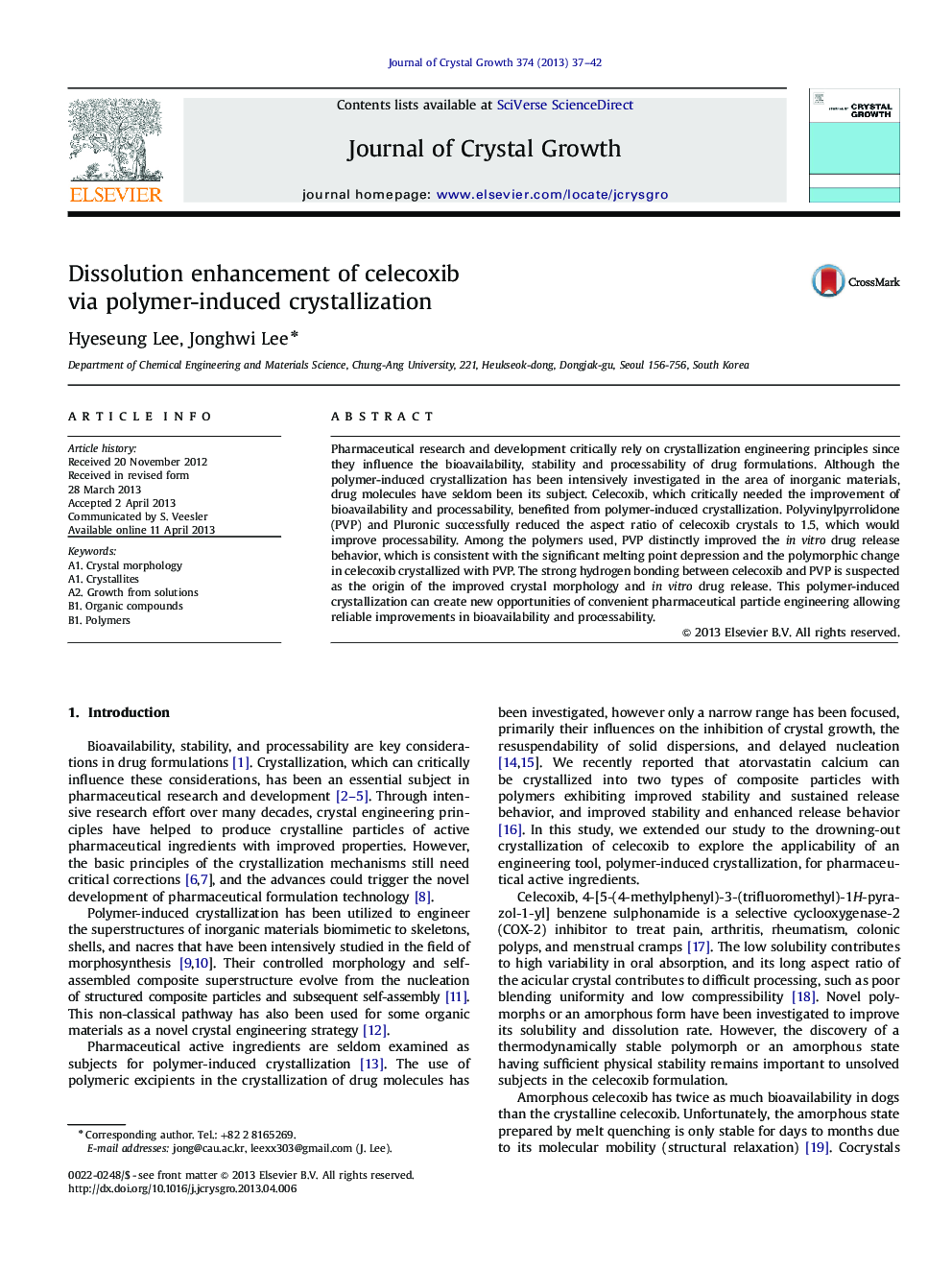| Article ID | Journal | Published Year | Pages | File Type |
|---|---|---|---|---|
| 1790971 | Journal of Crystal Growth | 2013 | 6 Pages |
•Celecoxib, a selective COX-2 inhibitor, benefited from polymer-induced crystallization.•The polymer-induced crystallization produced celecoxib/polymer composite particles.•Polyvinylpyrrolidone and Pluronic successfully reduced the aspect ratio of celecoxib crystals to 1.5.•Polyvinylpyrrolidone distinctly improved the in vitro drug release behavior.
Pharmaceutical research and development critically rely on crystallization engineering principles since they influence the bioavailability, stability and processability of drug formulations. Although the polymer-induced crystallization has been intensively investigated in the area of inorganic materials, drug molecules have seldom been its subject. Celecoxib, which critically needed the improvement of bioavailability and processability, benefited from polymer-induced crystallization. Polyvinylpyrrolidone (PVP) and Pluronic successfully reduced the aspect ratio of celecoxib crystals to 1.5, which would improve processability. Among the polymers used, PVP distinctly improved the in vitro drug release behavior, which is consistent with the significant melting point depression and the polymorphic change in celecoxib crystallized with PVP. The strong hydrogen bonding between celecoxib and PVP is suspected as the origin of the improved crystal morphology and in vitro drug release. This polymer-induced crystallization can create new opportunities of convenient pharmaceutical particle engineering allowing reliable improvements in bioavailability and processability.
